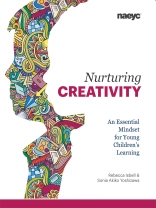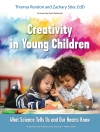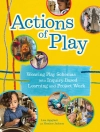Inspiring and supporting innovative thinking
Young children have great capacity for creativity that thrives when it is nurtured. Early childhood teachers have the opportunity to inspire children’s innovative thinking and doing by:
- Including creative opportunities across all domains of learning
- Designing a beautiful space that encourages children’s experimentation and play
- Extending children’s learning and challenging their thinking
- Documenting children’s thought processes and displaying their work Involving families and the community in children’s creative endeavors
- Reflecting on your beliefs and practices about creativity and nurturing your own creativity
Mục lục
Introduction
Chapter 1: What Is Creative Thinking and Why Do We Need It Now?
Chapter 2: Understanding the Creative Process
Chapter 3: The Environment: A Look Inside Classrooms That Inspire Creativity
Chapter 4: Characteristics of Creative Children and Adults
Chapter 5: What Is the Teacher’s Role?
Chapter 6: The Role of Play in Creativity
Chapter 7: Extending Thinking With Materials
Chapter 8: Displaying and Documenting Children’s Work
Chapter 9: Expanding the Community of Support
Epilogue
References
About the Authors
Acknowledgments
Giới thiệu về tác giả
Rebecca Isbell is an early childhood consultant and professor emerita of early childhood education at East Tennessee State University. She has authored numerous books and articles and presents on topics related to young children, creative thinking, storytelling, and the creative arts.
Sonia Akiko Yoshizawa is a Ph D fellow in early childhood education at East Tennessee State University. A coauthor of STEM Learning with Young Children: Inquiry Teaching with Ramps and Pathways, she conducts inquiry-based STEM trainings and presentations for teachers.












